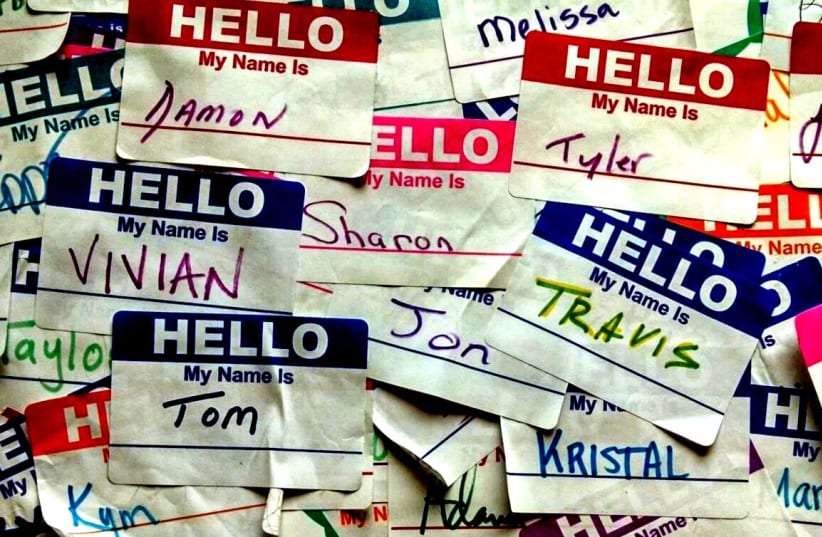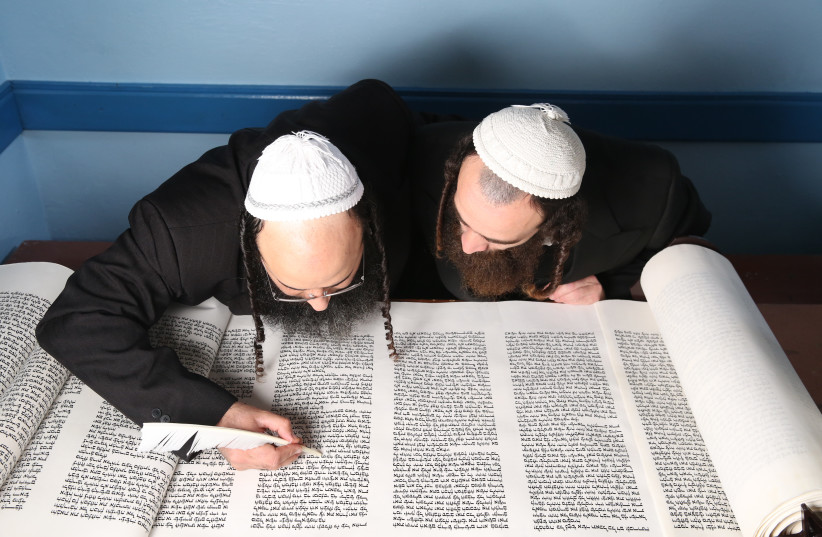The woman entered the narrative of the Book of Genesis unnamed, like many women in the Bible, including Noah’s wife, Lot’s wife, Pharaoh’s daughter, Job’s wife, Yiftach’s daughter and Manoah’s wife.
The other week, in parashat Hayei Sarah, we were introduced to another woman, a nurse, without being told her name. “So they sent off their sister Rebekah and her nurse” (Gen. 24:59). However, unlike the women referenced above who remain nameless throughout the Bible, we are eventually, in this week’s parasha, told her name when we read, “Deborah, Rebekah’s nurse, died, and was buried under the oak below Bethel; so it was named Allon-bacuth (Gen. 35:8).
All of this raises a number of questions. With women so often remaining nameless in the Bible, which reflects a patriarchal grounding within the text, why is Deborah named? And while she is named, it comes with scarce biographical information. All we are told is that she was Rebekah’s nurse who traveled with her from Nahor to meet Rebekah’s husband-to-be, Isaac, and that she eventually died near Bethel and was buried under an oak tree. With that limited information we wonder what was it about her life that generated the revelation of her name?
Why is Deborah named?
Another interesting layer in this dynamic of women and names in the Bible is that a number of unnamed women are eventually given names through midrash.
“‘And the sister of Tubal-Cain was Na’amah’ (Gen. 4:22). Rabbi Abba bar Kahana said, ‘Na’amah was Noah’s wife. Why was she called Na’amah? Because all of her deeds were ne’imim, pleasant’”
Genesis Rabbah 23:3
Thus we are told Noah’s wife’s name: “‘And the sister of Tubal-Cain was Na’amah’ (Gen. 4:22). Rabbi Abba bar Kahana said, ‘Na’amah was Noah’s wife. Why was she called Na’amah? Because all of her deeds were ne’imim, pleasant’” (Genesis Rabbah 23:3).
We also learn, through another midrash (Tanhuma [Buber], Vayera 8), “This is Lot’s wife, Edit, of whom it is stated, ‘But his wife looked back, and she became a pillar of salt’ (Gen. 19:26).” Biblical scholar John T. Townsend comments, “The name Edit suggests the Hebrew ‘ed,’ which means ‘witness’; and indeed, as a pillar of salt, Edit did become a witness to all who saw her.”
In Leviticus Rabbah (1:3), we read about Pharaoh’s daughter. “In Chronicles it is written, ‘These were the sons of Batyah, daughter of Pharaoh.’ Rabbi Yehoshua taught in the name of Rabbi Levi that the Holy One said to Batyah (lit. daughter of God), the daughter of Pharaoh: Moses was not your son, yet you called him your son; you, too, though you are not My daughter, yet I will call you My Daughter. This is why it says, ‘These were the sons of Batyah, daughter of Pharaoh.’”
When it comes to Job’s wife, the Talmud (Bava Batra 15b) informs us, “And some say that Job lived in the days of Jacob and that he married Dinah, the daughter of Jacob.”
The suggested name for Yiftach’s daughter is found in Liber Antiquitatum, a Latin text preserving an anonymous Hebrew author (mid-first century CE and mid-second century CE) who said that her name was Seila.
From the Book of Judges we know Samson’s father is Manoah, but not his mother’s name. We learn his mother’s name only later in a midrash (Numbers Rabbah 10:5): “And because she saw an angel [Judges 13:3], who informed her that she was pregnant with Samson], she was called Zlelponi, which signifies that she turned her face (poneh) to look at the angel.”
We will never know the exact reason for the need of the writers of midrashim to “discover” the names of these nameless women. The introduction of those names more than likely had more to do with connecting the dots of the messages within the holy text. As Rabbi Ben Bag Bag taught, “Turn it and turn it again, for all is in it; see through it; grow old and worn in it; do not budge from it, for there is nothing that works better than it” (Avot 5:22).
For the rabbis, all knowledge is contained within the Bible, particularly the Torah; however, that knowledge is not always on the surface but must be discovered and revealed through various hermeneutical formulas. One of the most famous is the 13 hermeneutical rules of Rabbi Ishmael, which we find at the beginning of many siddurim. In the same way a microscope or telescope helps us see things that are there but we can’t see them, the process of midrash does the same when it comes to the biblical text. For the rabbis, a fuller understanding of the text, including unearthing names of the nameless, makes for a fuller perception and encounter with the words of the Bible as a way to discern what God wants from us.
WHEN IT comes to Deborah, even though we are told her name, but with very little biographical information, we want to know more about her.
One matter that stands out is that when she dies, she is traveling not with Rebekah but with Rebekah’s son Jacob, who is returning to the Land of Israel, having fled his brother Esau 20 years earlier. This raises the question: why was Deborah with Jacob at that time, far away from Rebekah? Rashi answers (on Gen. 35:8), “But the explanation is: because Rebekah had promised Jacob ‘then I will send and fetch thee from thence’ (Gen. 27:45), she sent Deborah to him to Padan-aram to tell him to leave that place, and she died on the return journey. I learned this from a comment of R. Moses Hadarshan” (The Saperstein Edition, Mesorah Publications).
In this light, Deborah is essential for the fulfillment of God’s promise that God made to Jacob 20 years earlier as he began his exile: “I will return you to this soil” (Gen. 28:15). And let’s pause for a moment and realize that Deborah would have traveled some 724 km. (450 miles) from the Land of Israel to Haran, where Jacob was living, and then do the same on the return journey. More important, without Deborah making this long and difficult journey and telling Jacob to come home, the story of the Jewish people would have ceased. Deborah (Devorah in Hebrew) means “bee.” In essence, Deborah, like a bee which carries pollen from one flower to another, carried Jacob back to the Promised Land.
“The significance of Deborah is suggested by more than the placement in the text of the description of her funeral. There are thousands of people mentioned in the Torah, but the funerals of only a few are recorded. There are four funerals where we are told that people wept. These are of Sarah, Moses, Aaron, and Deborah.”
Mark Gerson
Mark Gerson adds a very important insight: “The significance of Deborah is suggested by more than the placement in the text of the description of her funeral. There are thousands of people mentioned in the Torah, but the funerals of only a few are recorded. There are four funerals where we are told that people wept. These are of Sarah, Moses, Aaron, and Deborah.” It is clear that Sarah, Moses, and Aaron played key and essential roles in the saga of the Jewish people. By including Deborah with them, Scripture tells us she was indispensable in the unfolding of the chronicles of the Jewish people.
One final note. The oak tree Deborah was buried under is called Allon-bacuth, meaning “oak of weeping.” That is to say, the mourning for her was so great because of the impact of Deborah’s life on the existence and continuum of the Jewish people. ■
The writer, a Reconstructionist rabbi, is rabbi emeritus of the Israel Congregation in Manchester Center, Vermont. He teaches at the Arava Institute for Environmental Studies on Kibbutz Ketura and at Bennington College.

